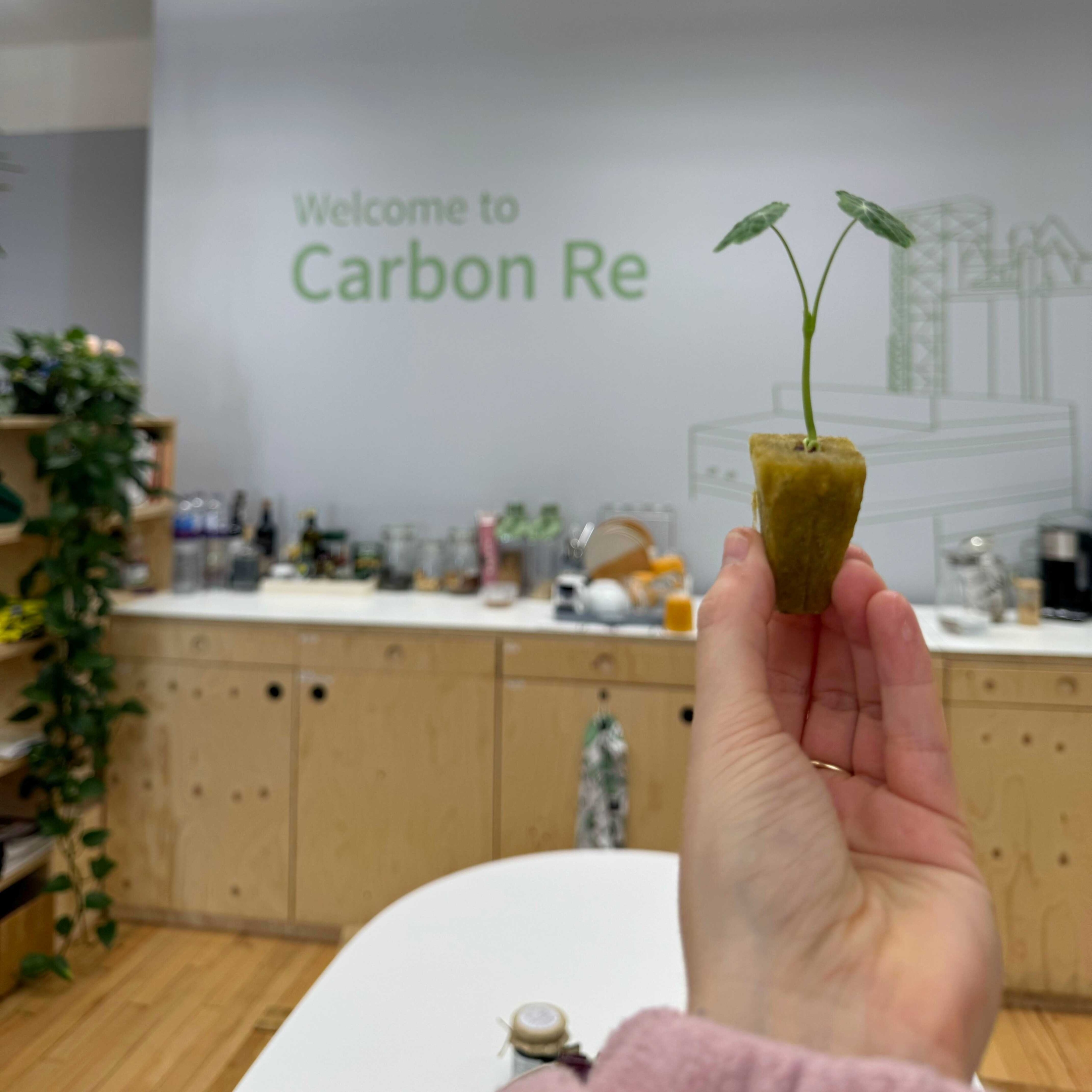
As we battle with the short, wet and chilly days of winter in the UK, the emergence of our Fork Farms’ Flex Farm hydroponics garden is bringing much-needed positivity to the team. And, embracing our New Year’s resolution to be more mindful and environmentally responsible about the food we eat at work, we are delighted to see so many green shoots emerging from the lemon and sweet basil, coriander, rocket, kale, sorrel and a variety of lettuces we’ve seeded over the past few weeks.
Let’s hope this serves as a metaphor for Carbon Re’s exponential growth in 2025!
As a team who are as hungry for knowledge as we are for homegrown salad, we are excited to share what we’ve learned about the wider sustainability benefits of hydroponic farming.
Food centimetres, not miles
The most obvious benefit of growing our salad in the office is that we completely eliminate the carbon footprint of our food miles. Compared to traditional farming, a Flex Farm saves an average of 1,683 food miles each year.
Energy efficiency
The first question that everyone in our office asked was “what about the energy cost?”. Our farm runs 16 hours a day, 7 days a week – so what does this mean for our energy consumption (and our bills!)?
- Our farm units use 40% less electricity than other hydroponic technologies, conserving 4,346 kWh of CO2 due to their energy saving design.
- These systems also use 98% less water and land compared to traditional farming methods, making them a sustainable choice for urban settings. The hydroponic system is a closed loop to retain the nutrient water as it circulates around the farm.
- Additionally, Carbon Re’s London office is based in a Workspace, who take their pledge towards net-zero and sustainability very seriously, with our electricity sourced from 100% renewable sources and roof solar panels directly feeding into the building and supplying 22,000kWh a year.
Shelf life
One of the biggest surprises was the significantly longer shelf-life of our produce. This is because it’s grown and handpicked a mere two meters from our kitchen and doesn’t spend days travelling and sitting on supermarket shelves before getting to our plates.
A lot of the UK’s leafy greens come from Almeria, Spain, which is a major supplier of Europe’s off-season produce. In total, the produce travels up from Spain, through France and into the Midlands (1,500 miles) where it is packaged and processed in distribution centres before getting to the supermarket. The time travelling also means the salad loses the nutritional value it had at the time it was harvested.
For our team, the long shelf life is rarely tested as we devour our tasty produce quickly, however, one of our colleagues found that the leaves were still fresh after 3 weeks!
Sustainable practice
Our office lettuce farm aligns perfectly with our mission to reduce gigatonnes of carbon.
Stay tuned as we continue to nurture our office farm and explore its impact compared to store-bought produce. Here’s to new beginnings and sustainable growth in 2025!

